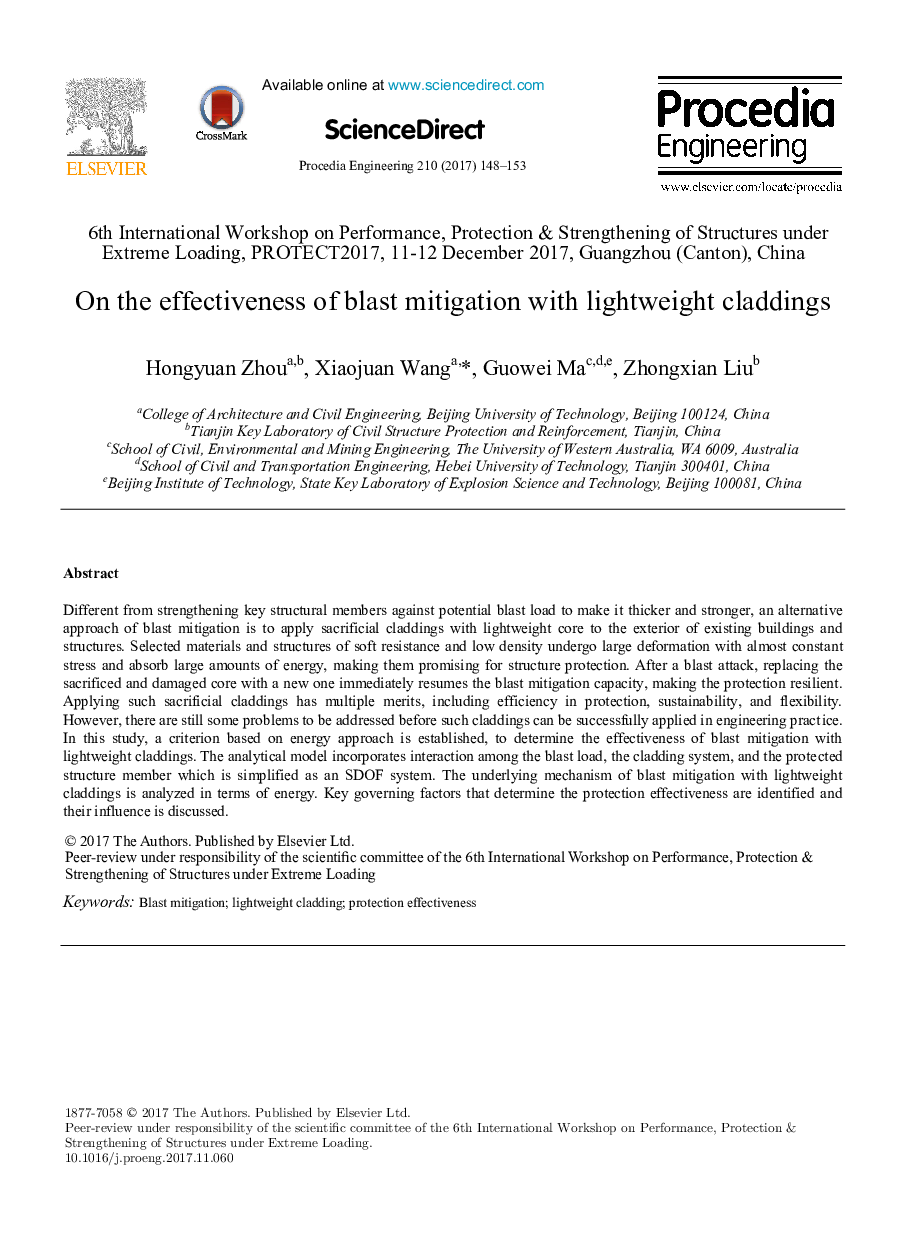| Article ID | Journal | Published Year | Pages | File Type |
|---|---|---|---|---|
| 7226722 | Procedia Engineering | 2017 | 6 Pages |
Abstract
Different from strengthening key structural members against potential blast load to make it thicker and stronger, an alternative approach of blast mitigation is to apply sacrificial claddings with lightweight core to the exterior of existing buildings and structures. Selected materials and structures of soft resistance and low density undergo large deformation with almost constant stress and absorb large amounts of energy, making them promising for structure protection. After a blast attack, replacing the sacrificed and damaged core with a new one immediately resumes the blast mitigation capacity, making the protection resilient. Applying such sacrificial claddings has multiple merits, including efficiency in protection, sustainability, and flexibility. However, there are still some problems to be addressed before such claddings can be successfully applied in engineering practice. In this study, a criterion based on energy approach is established, to determine the effectiveness of blast mitigation with lightweight claddings. The analytical model incorporates interaction among the blast load, the cladding system, and the protected structure member which is simplified as an SDOF system. The underlying mechanism of blast mitigation with lightweight claddings is analyzed in terms of energy. Key governing factors that determine the protection effectiveness are identified and their influence is discussed.
Keywords
Related Topics
Physical Sciences and Engineering
Engineering
Engineering (General)
Authors
Hongyuan Zhou, Xiaojuan Wang, Guowei Ma, Zhongxian Liu,
